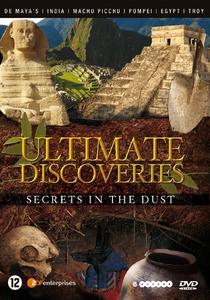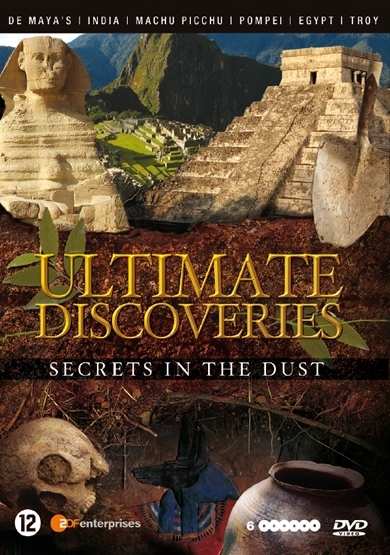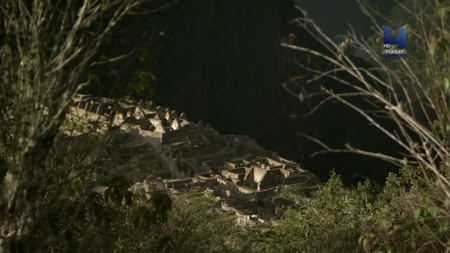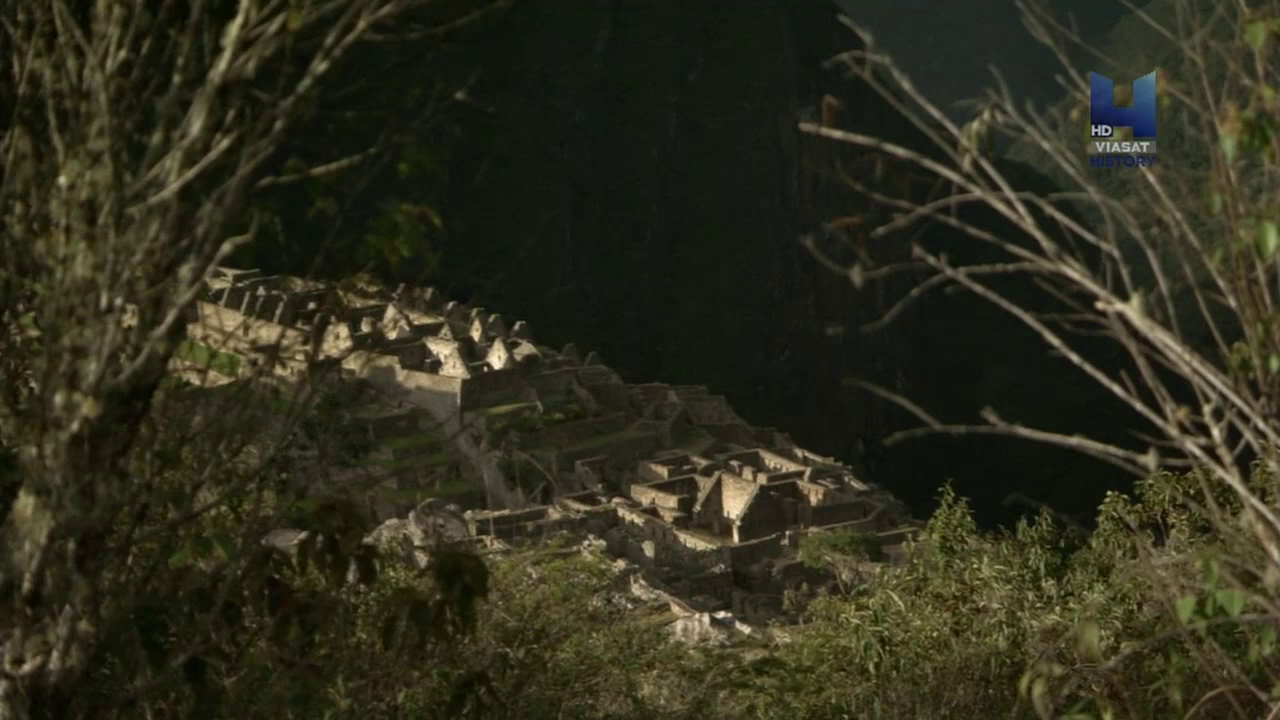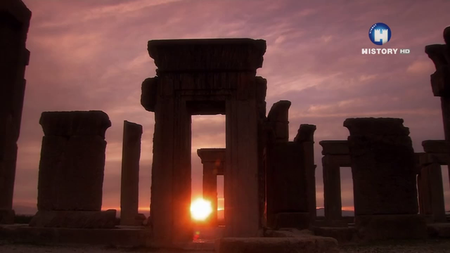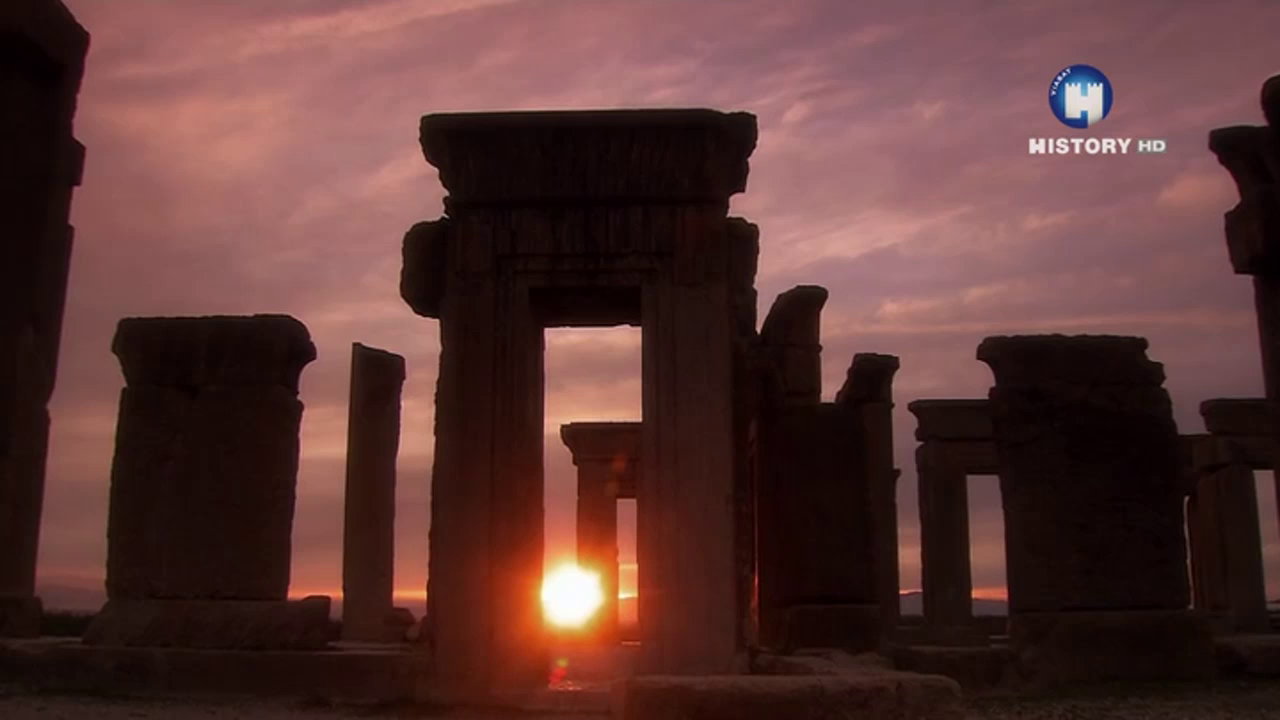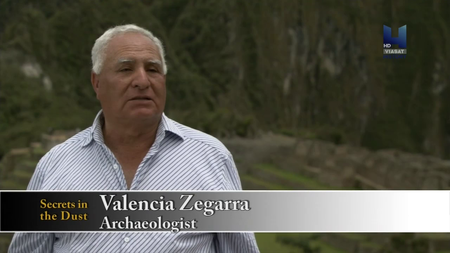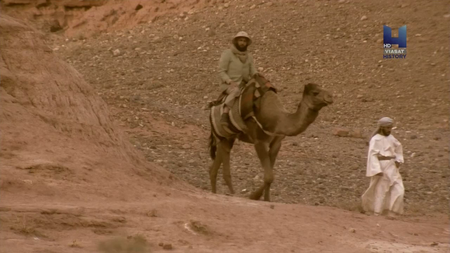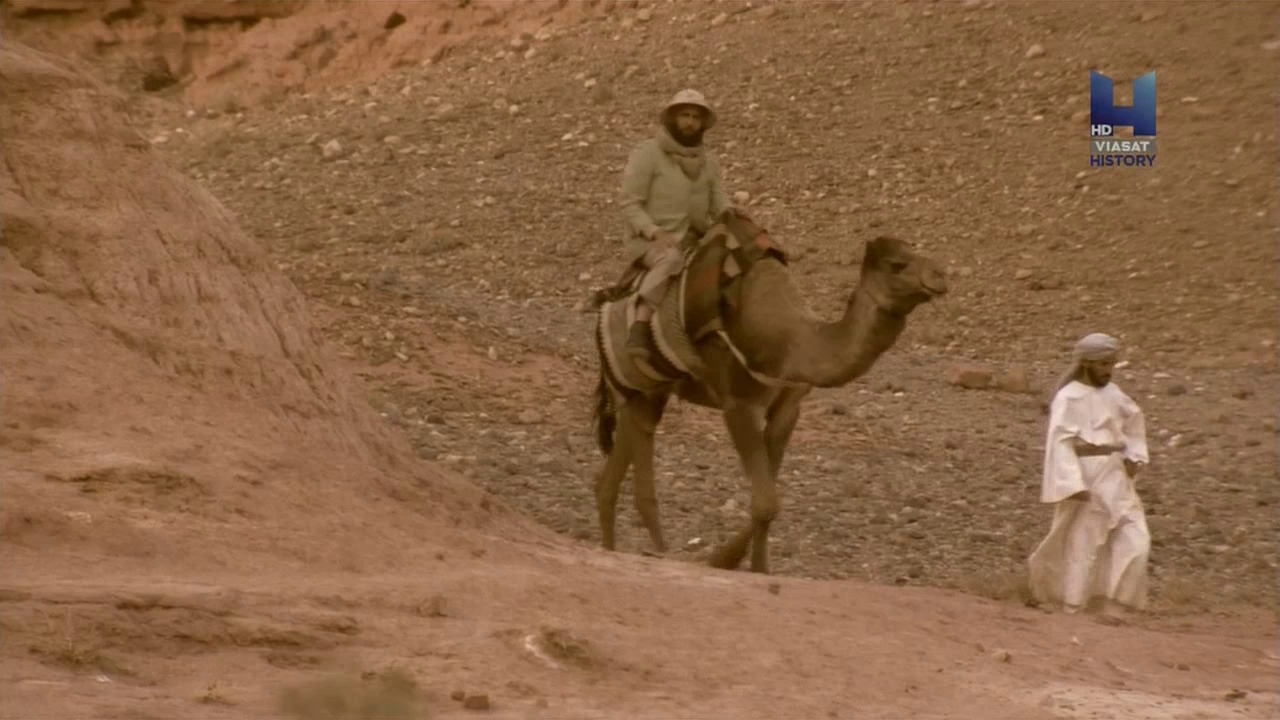ZDF Enterprises - Secrets in the Dust: Collection 1 (2009 - 2014)
HDTV | 1280 x 720 | .MP4/AVC @ 3022 Kbps | 12x~50mn | English AAC 160 Kbps, 2 channels | 13.7 GB
Genre: Documentary, History
HDTV | 1280 x 720 | .MP4/AVC @ 3022 Kbps | 12x~50mn | English AAC 160 Kbps, 2 channels | 13.7 GB
Genre: Documentary, History
Now in its 2nd Season, the story of archaeology fascinates both laymen and professionals. In these installments we accompany Ernst Herzfeld on his last expedition to Persepolis in 1923; we travel to Mexico with the man who cracked the code of the Aztec calendar; we visit the greatest pre-industrial city on earth at Angkor; we join Isidoro Falchi as he discovers proof of the existence of the Etruscans; and we watch Alfred Merlin found the discipline of marine archaeology when he discovers shipwrecks in the Mediterranean..
Part 1: Machu Picchu City In The Clouds
Hawaiian-born, Yale-educated Hiram Bingham was determined to make a name for himself as an explorer. At the beginning of the 20th Century, when the last empty spaces on the globe were fast disappearing, he decided to climb South America’s highest mountain and discover the legendary last refuge of the Incas after the Conquistadors’ invasion. In the end, the mountain he scaled turned out to be only the second-highest. And the lost city in the clouds he discovered was not the Inca refuge, but an administrative centre: the fabulous Machu Picchu, still one of the greatest tourist magnets in the world. Today’s archaeologists can at last explain how it was built, with astonishing precision, 4,000 meters up on the mountain-tops - a sophisticated canal system was constructed to prevent it being washed away. And as if to emphasize that even today this is an extreme region, in January 2010 hundreds of visitors had to be rescued from Machu Picchu by helicopter in a days-long ordeal, after rockfalls and heavy rain cut off their return journey.
Part 2: Troy the Truth Behind the Legend
In one of the epic stories of archaeology, German multimillionaire Heinrich Schliemann set out to find the true location of Troy, site of the duel of Achilles and Hector in the Trojan War, the greatest legend of the ancient world. In decades of patient detective work, fortuitous encounters, endless energy, and obsessive ambition, he discovered a fabulous horde of jewellery - Priam's Treasure - at a multilayered site he was convinced was Troy. He was right about the location, but wrong about the treasure (by 2000 years and several levels of excavation). In his quest for "authenticity", Schliemann even married a young Greek woman, making her desperately unhappy until she resigned herself to her role as his muse and helper. Schliemann managed to hide some of his most valuable finds from the Turkish authorities. But Priam's Treasure is no longer in Berlin, where he presented it as a gift to the German nation. The Soviets took it to Moscow at the end of WWII and show no sign of giving it back. This film tells Schlieman's story and also reveals the latest vital archaeological discovery: the remarkable historical truth that lies behind the legend of the Trojan War.
Part 3: Maya Rivals in the Jungle
From the 1860s to the 1880s two explorers - the German Teobert Maler and the American Edward Thompson - competed in a bitter rivalry to find and photograph lost Mayan cities, deep in the Mexican and Guatemalan jungles. Maler was the superior scientist and photographer, but Thompson had a flair for adventure and self-promotion - and a way of keeping his discoveries out of government hands. Between them, they rediscovered a wonderful lost civilisation, whose language and architecture still challenges today's hi-tech archaeologists. Teobert Maler died embittered and almost forgotten; but his photographs are still treasured as the first and best records of Mayan cities before they were overrun by tourists from the developed world.
Part 4: Pompeii Rebirth of a City
Archaeology, as we understand it, didn't exist in 1758 when Johann Joachim Winckelmann made his way from the royal library in Dresden, Germany, to visit another private collection. He wanted to see the King of Naples's museum of statues, salvaged from crude digs at the cities of Pompeii and Herculaneum, 1700 years after their destruction in the eruption of Vesuvius in AD79. The king's guards refused him entry. But Winckelmann persevered, sneaking into the museum and the excavation sites, until he published an illicit catalogue of the finds that took the civilized world by storm, sparking a new interest in, and understanding of, the classical world. At last Winckelmann's life's work was recognized, but he had to fight to the end of his life for the ideal of scientifically accurate and responsible archaeology. In the 21st century, Andrew Wallace Hadrill directs excavations at the two lost cities. He is no stranger to controversy, such as: how to save the greatest unexplored library of the ancient world, at the Villa dei Papiri, threatened by flooding and the ever-present risk of a further eruption. This film tours the lost cities (including Pompeii's famous "red-light" district) with Andrew Wallace Hadrill , recounts the drama of Winckelmann's discoveries, and tells the story of the disaster itself, as witnessed by the unique human remains, that give an almost minute-by-minute account of the day of destruction.
Part 5: India the First Civilization
As Indian independence approached in the first half of the 20th century, British archaeologists John Hubert Marshall and Sir Mortimer Wheeler worked at breakneck speed to understand the great ancient civilisations of the subcontinent, which the British Empire had ruled for a mere 200 years. The British archaeologists and their Indian colleagues succeeded in identifying the Indus civilisation, a sophisticated culture up to 4000 years old whose towns and cities built of clay bricks extended over a vast area - apparently without the use of a written language. But as they worked on, in peace and then in war, the archaeologists found themselves faced with a familiar question. Was this advanced Indus civilisation peaceful, or was it forged and maintained through cruel wars?
Part 6: Egypt Finding the Pharaohs
Fifty years before the discovery of Tutankhamun's tomb, Frenchman Auguste Mariette and German Emil Brugsch worked together in Cairo and Luxor to identify and decipher the contents of the tombs where the Pharaohs were laid to rest. They discovered the names and dates of Egypt's earliest Pharaohs, the ones who created Egypt's Empire and civilisation; they started the collection that would become the legendary Egyptian Museum in Cairo; and most importantly they found the tomb - and the mummy - of the greatest Pharaoh of them all: Ramses II. Bringing his mummy up the Nile to Cairo was not only a momentous occasion for archaeology - it was also a seminal moment for the re-awakening of Egyptian national consciousness and pride. Zahi Hawass, head of Egyptian archaeology, explains how their work continues today, both scientifically and symbolically. Meanwhile American Kent Weeks races against the clock to save tombs facing a new, unexpected enemy - the enthusiasm of international tourists, whose perspiration is causing precious wall-paintings to disintegrate and even ceilings to collapse.
Part 7: Atlantis a Dive into History
Alfred Merlin was digging for Roman remains in Tunisia in 1907 when sponge-divers identified mysterious remains - stone columns, just off-shore in the Mediterranean. Was this the legendary lost city of Atlantis? But when beautifully crafted Roman works of art were salvaged from the site, Merlin came to an even more intriguing conclusion: These were the remains of a Roman shipwreck. The Mediterranean, he knew, was the highway of the ancient world - water was the only efficient way to transport heavy goods quickly throughout the Empire. And when greedy traders overloaded their ships, the resulting disasters left behind a gift for archaeologists 2000 later. Understand where the ships were going and what they were taking, and you could decode the whole of the ancient world. And so Alfred Merlin created a whole new discipline: marine archaeology. At first it was exhausting and extremely dangerous work. Divers in the cumbersome suits with lead boots and copper helmets depended on a steady stream of air pumped from the surface. Many suffocated or died in agony from the bends. But the rewards were fabulous: individual artworks and the revelation of a trade network that saw building materials and luxuries crossing hundreds of miles of sea to construct new colonies in the image of Rome. This film shows the pioneers at work in Merlin's time and their successors today, faced with the same challenges of salvage and preservation, and even using some of the same methods.
Part 8: Aztecs Sacrifice and Science
Through its ability to make us dream and marvel at the achievements of the past, archaeology has evolved from an inconspicuous discipline based on ruins and fragments into one of the most attention-grabbing fields of scientific study today. Luckily for him, Eduard Seler had a weak constitution; in 1882 he met and married his doctor's daughter. Caecilie's energy and curiosity complemented Eduard's intellectual passion and capacity for hard, detailed work, and together they left Berlin for Mexico to decipher the codices of the Aztecs. These were the only authentic written accounts of the civilisation that weren't destroyed by the arrival of the Spaniards in the 16th century - and nobody had succeeded in interpreting them. Seler cracked the code of the Aztec calendar, which in turn revealed a great deal about their sacrificial rituals and their temple-building cycles; at the turn of every Aztec century, new, grander temples must be built over the old ones. Seler also realised that Aztec illustrations revealed the truth about Aztec education and everyday working lives. Meanwhile, Caecilie photographed their discoveries on their travels, and collected Aztec artefacts, found in far-flung rural markets. Today's archaeologists are making further important discoveries, like King Montezuma's secret room for communing with the gods, unearthed when a lift shaft in a Mexico City block was renovated. Today's scientists face the same challenge Seler knew - Mexico's capital city is built right over the ancient Aztec capital, so the opportunities to dig are limited and frustratingly brief. Ironically this fact, like his poor health, played to Seler's scholarly strengths and helped him become a giant in the story of archaeology.
Part 9: Etrucans Glory before Rome
It was a chance find of a coin in a field that led Isodoro Falchi to identify the site Vetulonia the last township of the Etruscan federation. This loose grouping of hilltop cities inhabited Italy's beautiful Tuscany region for 1,000 years, until their disappearance around 500 BC. Because they decorated their tombs as facsimiles of their homes, we know exactly how they lived. From these, their unmistakable statues and other artifacts, we know that they used iron tools, built towns with stone temples, and lived in terraced houses with small interior pools. Theirs was a sensuous, prosperous lifestyle of banquets and pleasure, with equality between the sexes - and a healthy interest in sex itself. As if all this was too good to be true, they predicted their own downfall, after a thousand years. The Romans seemed almost too happy to oblige, for no-one must be seen to have influenced them - even though they built on the achievements of the Etruscans. Literally, in the case of Rome, where they even adopted their sewerage system! In Falchi's day the archaeological authorities in Rome seemed almost as reluctant to recognise his discoveries as the Romans themselves had been to remember the Etruscans; but today's geneticists have proved that Falchi was right. They have discovered that the current inhabitants of Campiglia Marittima , once called Vetulonia, are descended from the Etruscans of old; and they have solved a second mystery. The original ancestors of the Etruscans came not from Italy but from Asia Minor: today's Turkey.
Part 10: Hunting for the Ice Age
It was a chance find of a coin in a field that led Isodoro Falchi to identify the site Vetulonia the last township of the Etruscan federation. This loose grouping of hilltop cities inhabited Italy's beautiful Tuscany region for 1,000 years, until their disappearance around 500 BC. Because they decorated their tombs as facsimiles of their homes, we know exactly how they lived. From these, their unmistakable statues and other artifacts, we know that they used iron tools, built towns with stone temples, and lived in terraced houses with small interior pools. Theirs was a sensuous, prosperous lifestyle of banquets and pleasure, with equality between the sexes - and a healthy interest in sex itself. As if all this was too good to be true, they predicted their own downfall, after a thousand years. The Romans seemed almost too happy to oblige, for no-one must be seen to have influenced them - even though they built on the achievements of the Etruscans. Literally, in the case of Rome, where they even adopted their sewerage system! In Falchi's day the archaeological authorities in Rome seemed almost as reluctant to recognise his discoveries as the Romans themselves had been to remember the Etruscans; but today's geneticists have proved that Falchi was right. They have discovered that the current inhabitants of Campiglia Marittima , once called Vetulonia, are descended from the Etruscans of old; and they have solved a second mystery. The original ancestors of the Etruscans came not from Italy but from Asia Minor: today's Turkey. From the latest excavations by Simona Rafanelli and Sylvia Guideri we understand one more crucial fact.
Part 11: Persia Legacy of the Flames
In 1923 Ernst Herzfeld was the greatest living scholar of the Persian Empire, that ruled in the Middle East from 612BC until it was defeated by Alexander the Great in 330BC. That year Herzfeld set out on his last major expedition. It would last more than 10 years. It would make crucial discoveries about this misunderstood civilisation, and it would end in personal disaster. A German expedition in the 1920s was of necessity small-scale, operating with little or no money. The defeated power in WWI could no longer afford such "luxuries". But this was also an opportunity: the colonial powers - Britain and France - were not popular with the local governments in the region. By teaming up with oil money from America, Herzfeld could gain both political, and financial, support - enough to continue his work. And what discoveries he made: Herzfeld excavated the administrative centre of Persepolis, the Persian imperial capital, uncovering thousands of clay tablets which described in detail the administrative system and the trade networks of the Empire. Far from being the tyranny described by their Greek conquerors, this was evidence of a tolerant and cosmopolitan Empire that took the best from all the peoples it ruled.
Part 12: Secrets of Angkor
Angkor Wat is often hailed as one of the most extraordinary architectural creations ever built, with its intricate bas-reliefs, strange acoustics and magnificent soaring towers. Angkor Wat, originally named Vrah Vishnulok - the sacred abode of Lord Vishnu, is the largest temple in the world. It was built by King Suryavarman II in the 12th century. The Sanskrit Nagara (capital) was modified by the Cambodian tongue to Nokor and then to Angkor. The word Angkor is derived from the Sanskrit word 'nagara' meaning 'holy city'. Vatika is Sanskrit word for temple. "The city which is a temple," Angkor Wat is a majestic monument, the world's largest religious construction in stone, and an architectural masterpiece. The Khmers adhered to the Indian belief that a temple must be built according to a mathematical system in order for it to function in harmony with the universe. Distances between certain architectural elements of the temple reflect numbers related to Indian mythology and cosmology. The sheer size of the place leaves visitors in awe and the complex designs illustrate the skills of long gone priest architects.
Related Documentaries:
Ancient Megastructures Collection (2009)
UKTV - Museum Secrets: Collection (2012)
Science Channel - Lost World of Pompeii (2016)
Smithsonian Channel - Sacred Sites: Egypt (2016)
Mary Beard's Ultimate Rome: Empire Without Limit (2016)
The Other Pompeii: Life and Death in Herculaneum (2013)
BBC - Treasures of the Indus (2015)
BBC - Treasures of Ancient Egypt (2014)
Smithsonian Channel - Secrets of the Taj Mahal (2014)
Smithsonian Channel - Angkor: Land of the Gods (2011)
Rome a History of the Eternal City: Series 1 (2012)
National Geographic - Rome Revealed (2010)
The Silk Road: China to Turkey (2011)
PBS Nova - Ghosts of Machu Picchu (2010)
PBS - Helen of Troy (2005)
BBC - Pompeii: The Last Day (2003)
General
Complete name : Secrets.In.The.Dust.Collection.1.01of12.Machu.Picchu.City.In.The.Clouds.mp4
Format : MPEG-4
Format profile : Base Media
Codec ID : isom
File size : 1.12 GiB
Duration : 50mn 31s
Overall bit rate mode : Variable
Overall bit rate : 3 187 Kbps
Encoded date : UTC 2014-11-15 15:19:49
Tagged date : UTC 2014-11-15 15:19:49
Writing application : Lavf51.12.1
Video
ID : 1
Format : AVC
Format/Info : Advanced Video Codec
Format profile : High@L4.1
Format settings, CABAC : No
Format settings, ReFrames : 1 frame
Format settings, GOP : M=1, N=12
Codec ID : avc1
Codec ID/Info : Advanced Video Coding
Duration : 50mn 31s
Bit rate : 3 022 Kbps
Width : 1 280 pixels
Height : 720 pixels
Display aspect ratio : 16:9
Frame rate mode : Constant
Frame rate : 25.000 fps
Color space : YUV
Chroma subsampling : 4:2:0
Bit depth : 8 bits
Scan type : Progressive
Bits/(Pixel*Frame) : 0.131
Stream size : 1.07 GiB (95%)
Language : English
Encoded date : UTC 2014-11-15 15:19:49
Tagged date : UTC 2014-11-15 15:19:49
Audio
ID : 2
Format : AAC
Format/Info : Advanced Audio Codec
Format profile : LC
Codec ID : 40
Duration : 50mn 30s
Bit rate mode : Variable
Bit rate : 160 Kbps
Channel(s) : 2 channels
Channel positions : Front: L R
Sampling rate : 48.0 KHz
Compression mode : Lossy
Stream size : 57.8 MiB (5%)
Encoded date : UTC 2014-11-15 15:19:49
Tagged date : UTC 2014-11-15 15:19:49
Complete name : Secrets.In.The.Dust.Collection.1.01of12.Machu.Picchu.City.In.The.Clouds.mp4
Format : MPEG-4
Format profile : Base Media
Codec ID : isom
File size : 1.12 GiB
Duration : 50mn 31s
Overall bit rate mode : Variable
Overall bit rate : 3 187 Kbps
Encoded date : UTC 2014-11-15 15:19:49
Tagged date : UTC 2014-11-15 15:19:49
Writing application : Lavf51.12.1
Video
ID : 1
Format : AVC
Format/Info : Advanced Video Codec
Format profile : High@L4.1
Format settings, CABAC : No
Format settings, ReFrames : 1 frame
Format settings, GOP : M=1, N=12
Codec ID : avc1
Codec ID/Info : Advanced Video Coding
Duration : 50mn 31s
Bit rate : 3 022 Kbps
Width : 1 280 pixels
Height : 720 pixels
Display aspect ratio : 16:9
Frame rate mode : Constant
Frame rate : 25.000 fps
Color space : YUV
Chroma subsampling : 4:2:0
Bit depth : 8 bits
Scan type : Progressive
Bits/(Pixel*Frame) : 0.131
Stream size : 1.07 GiB (95%)
Language : English
Encoded date : UTC 2014-11-15 15:19:49
Tagged date : UTC 2014-11-15 15:19:49
Audio
ID : 2
Format : AAC
Format/Info : Advanced Audio Codec
Format profile : LC
Codec ID : 40
Duration : 50mn 30s
Bit rate mode : Variable
Bit rate : 160 Kbps
Channel(s) : 2 channels
Channel positions : Front: L R
Sampling rate : 48.0 KHz
Compression mode : Lossy
Stream size : 57.8 MiB (5%)
Encoded date : UTC 2014-11-15 15:19:49
Tagged date : UTC 2014-11-15 15:19:49
Screenshots
Welcome to my blog - daily update!


